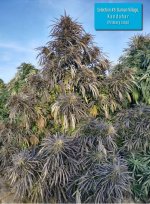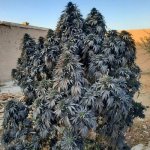IndicaFarmer
Well-known member
I'd try 9 hours on or even 8 before that drastic move, or should I say would have done.Manipur burma
I'm going to cut her down in a few weeks and try her again this year outside. She's on 10/14 been flowering forever, goes through a lot of reflower cycles.
View attachment 18079158
Lemon and raisinettes, lovely smells. Really interesting grow



















